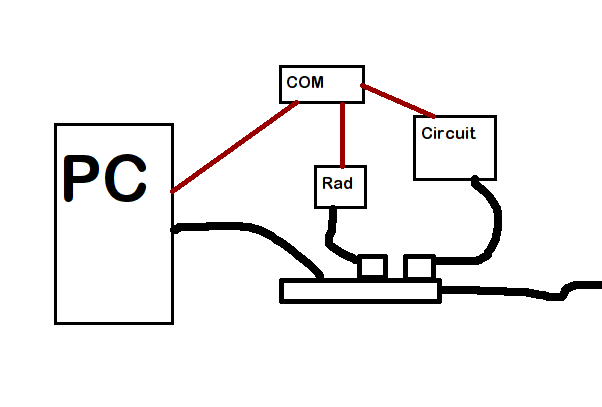I have a PC connected to a couple of devices via a serial port.
The item labelled "COM" is a simple manual serial port switcher that requires no power.
The item labelled "Rad" is a radio module whose data is sent to and from the serial port. I use this for testing my main circuit which is the other object shown. It as well has a radio module.
The mini long rectangle is a power bar connected directly to a wall socket and the squares above are 6VDC adapters to power my circuits. The PC uses power directly from the bar.
Both my circuits also use LM2940 voltage regulators with 10uF cap at input and 22uF cap at output.
When I initially turn everything on, it seems that everything runs normally but eventually the radio signal starts to run poor (receiver gets no data, and I could guess static build-up). After, I manually turn everything off by the flip of the power switch on the power bar (this is a basic power bar).
I go and touch a metal tab on a regulator on my own circuit and notice what I perceive to be static electricity. I describe it as a tingling effect until I remove my finger.
Now when I tried the PC by itself without the rest of the items pictured connected, it seems the PC is a major factor because when I turned it off and tried to touch the case I also felt static electricity.
So assuming the PC is the biggest culprit, is there any sort of circuitry that I can build as a bridge between the PC serial port connector and the serial cable so that my circuits don't act funny due to residue static?
And do I also need circuitry between the 6V output from the wall wart and the voltage regulator input to minimize the chance of static?

